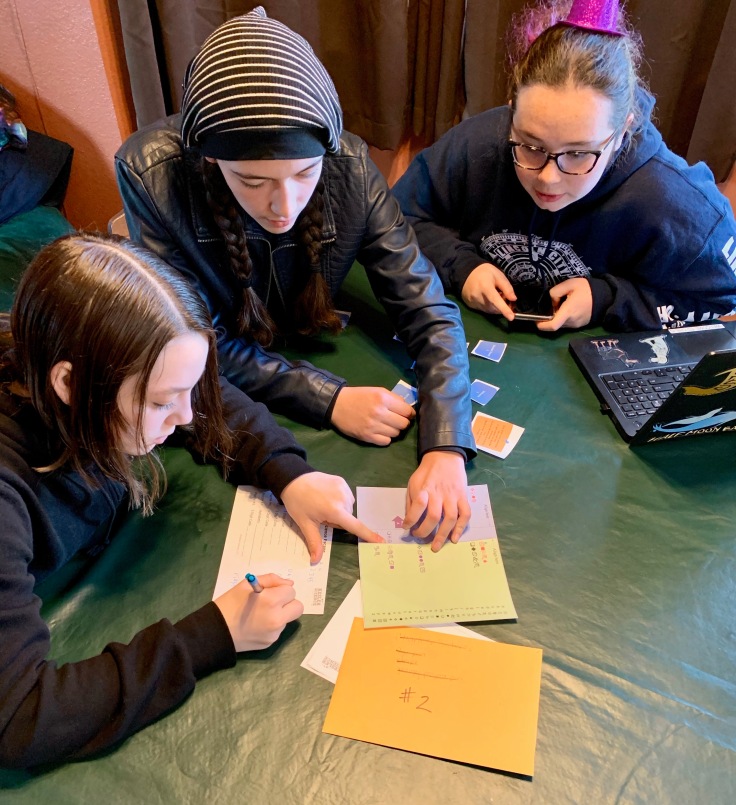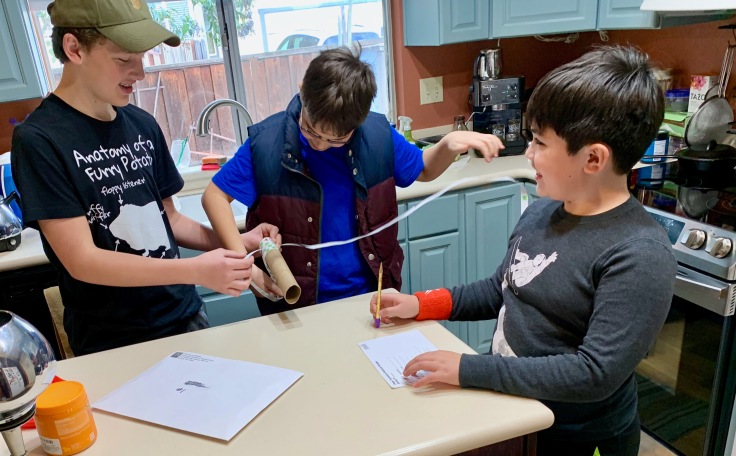Students were to look at videos and articles from Big History Project 5.0 & 5.1 over break. We actually started class with the Kessler Science, Plate Tectonics & Continental Drift Escape Room. This was pretty easy to set up, I just had to print out a few puzzles and cut out some pieces. The only thing I had to buy was transparencies for my inkjet, but you could just skip that puzzle if you don’t have them. I only have 10 students so I only made one of each puzzle and three groups solved the puzzles in different orders. I do not have the lock boxes but Kessler has a digital lock form that worked really well. I sent the form to students and once they had the codes they entered them in to see if they got them correct. The first group to get them all correct got their choice of candy prizes. 
This was the first time I’ve done an escape room activity and I think it worked pretty good as a review and it was a nice way to start class after a three week break.
 For the second half of class, we talked about life on earth, including extremeophiles (such as critters living near thermal events at the bottom of the ocean), the timeline for life developing on earth and finally we discussed the Drake equation and the possibility of other intelligent life existing in our Milky Way Galaxy. All three of these activities can be found on the Night Sky Network Outreach Resources.
For the second half of class, we talked about life on earth, including extremeophiles (such as critters living near thermal events at the bottom of the ocean), the timeline for life developing on earth and finally we discussed the Drake equation and the possibility of other intelligent life existing in our Milky Way Galaxy. All three of these activities can be found on the Night Sky Network Outreach Resources.
Extremeophiles: Life in the Extreme, consists of cards which can be printed from the pdf. Each card discribes an organism that lives in extreme conditions, very hot or very cold, acidic, or dark, or high pressure, etc. Each student was given a card then I asked for everyone who had an organism that likes really hot environments to raise their hand. I asked one of the students to read out loud the description of their extremeophile. I continued asked about different environmental factors and then asked which ones could survive WITHOUT water…. no one raised their hand. All life that we know of on this planet requires water in some form, so when looking for life on other worlds, we are concentrating our search on planets/moons with water.
As an active member of an astronomy club which does a lot of outreach, I was able to get the Earth Timeline/Watery Worlds Banner to use with my class. The Night Sky Network has a pdf so you can print out your own, but they also have instructions on doing this activity without the timeline and just using your out stretched arms, finger tip to finger tip as a timeline, so the banner is not required. The banner (and file) comes with markers describing different points in the evolution of life on earth, first single celled organisms, multicelled organisms, first land animals, dinosaurs, early humans, etc. I passed them out to students and asked them to put them on the timeline. Students that didn’t get one were invited to come up and move the ones already on the timeline if they didn’t think there were correct. Students did a great job and had them all very close to their proper places – on the banner the bottom is folded up to hide the answer so all you do is unfold it when the markers are in place to see if they match.
Lastly, I used the Anyone Out There powerpoint file that explains the Drake equation, which is a thought experiment designed to estimate the number of intelligent civilizations in the Milky Way Galaxy. There is an activity, with cards to print out and pass amoung the students, or you can just go through the questions as you do the presentation. There’s a video on the Night Sky Network page showing how to do the activity or you can watch Carl Sagan explain the Drake equation on youtube.
For homework, I gave the students the Tree of Life Infographic worksheet. They have to use the Tree of Life Infographic on Big History Project 5.1 to answer questions about the domains of different species and how they relate to each other. The infographic is too big and detailed to print easily so its easier for students to use online where they can zoom in to look at different details.
The middle school class did the exact same lessons.



1 Pingback